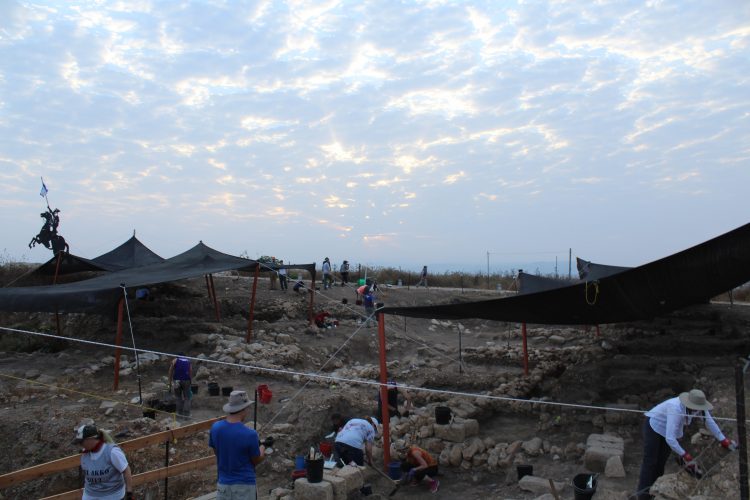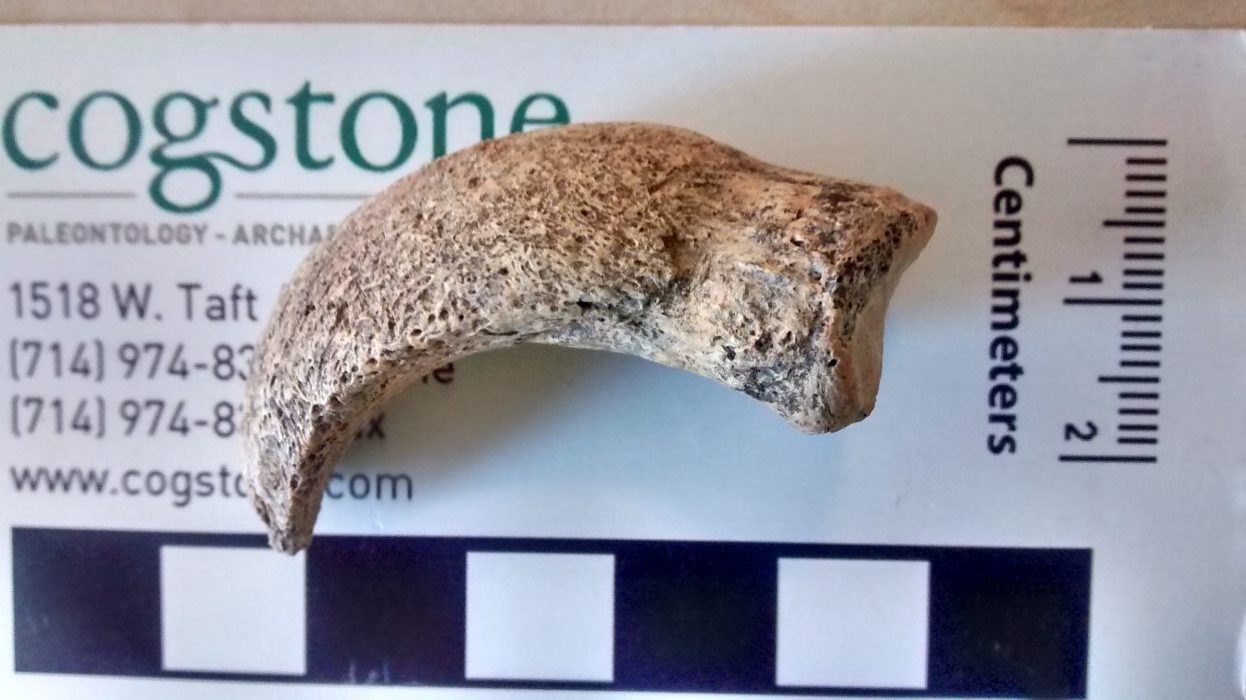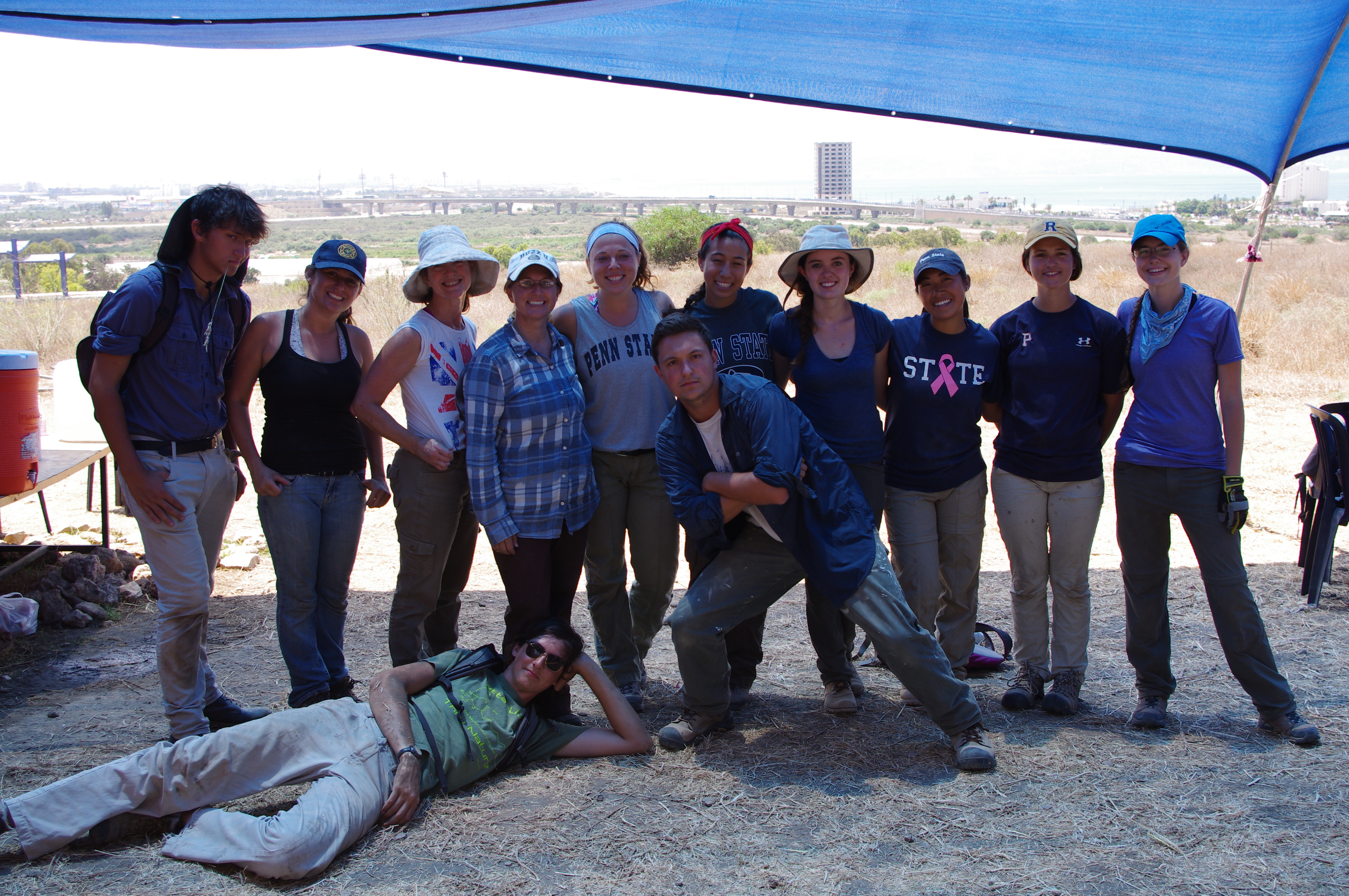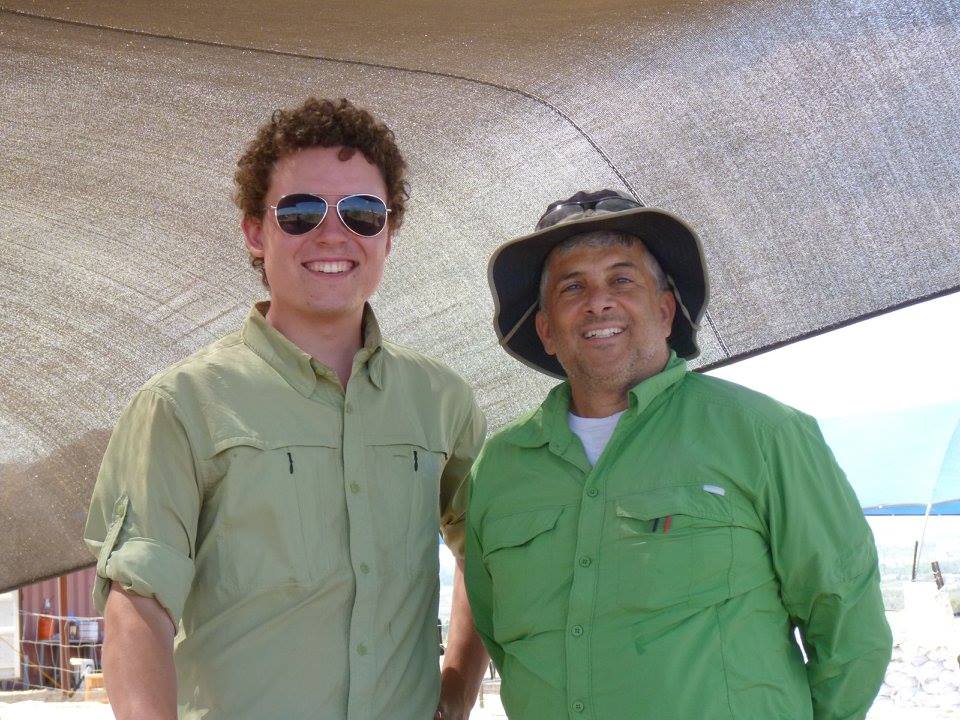An Unexpected Combination
By Megan Ashbrook.
Two of my loves are archaeology and horses. Never would I have imagined that thousands of miles away from America I would be using my horseback riding skills here at Tel Akko.
At Miami University, I work at our Equestrian Center and I am the Western team captain of our equestrian team. My job is a lot of manual labor but requires skill and confidence to do a good job. Every day on the tel, I am grateful that I have lifted hay bales and built up my leg muscles already. Digging requires a lot of lifting dirt buckets and squatting all day. I’m also grateful that I’m used to working in the sun because in Israel I spend about 6 and half hours working outside.
The similarities between my work with horses and work on the tel doesn’t end at manual labor. When working around horses, I have to have confidence even when I am unsure or nervous about what is going on. A horse will feel my every emotion and “mirror” the emotion back. Because of horses’ natural reaction I have learned to have confidence even though I might not be comfortable with the situation. For an example, there is one horse at Miami who will sometimes shy away at things if she doesn’t want to work anymore. Though her sudden movements may be startling, I have to maintain a calm composure in order to not amplify the situation. If I got nervous about her movements she would think there was really something to be afraid of.
On the tel, I also use this skill of assessing a situation and confidently working in it. I was a bit nervous about my first few days of excavation. But with my horseback riding skills I was able to be successful. I didn’t always know exactly what I was supposed to do but I fully embraced the concept of too many questions isn’t a bad thing.
Finally, my horseback riding coach at Miami University sent our team this quote before a show: “Success is not the achievement of perfection but the minimization and accommodation of imperfection.” I worked all of last year to live by that quote in my riding. I constantly remind myself of it before shows, during practice, and after a bad pattern test. That quote has become very important to me and now reflecting back I should remind myself of it on the dig too. I can’t identify every item correctly nor can I perfectly excavate my area. My success on this dig should include the imperfections of life.
Now past the half way point of my first excavation, I’m excited to get back to the horses at Miami. But I don’t want to leave Israel quite yet. I am very grateful that I have been able to combine some of my horseback riding skills with archaeology. Back on campus, I’m sure I’ll find unexpected uses for my archaeology skills too.[/vc_column_text][/vc_column][/vc_row]









